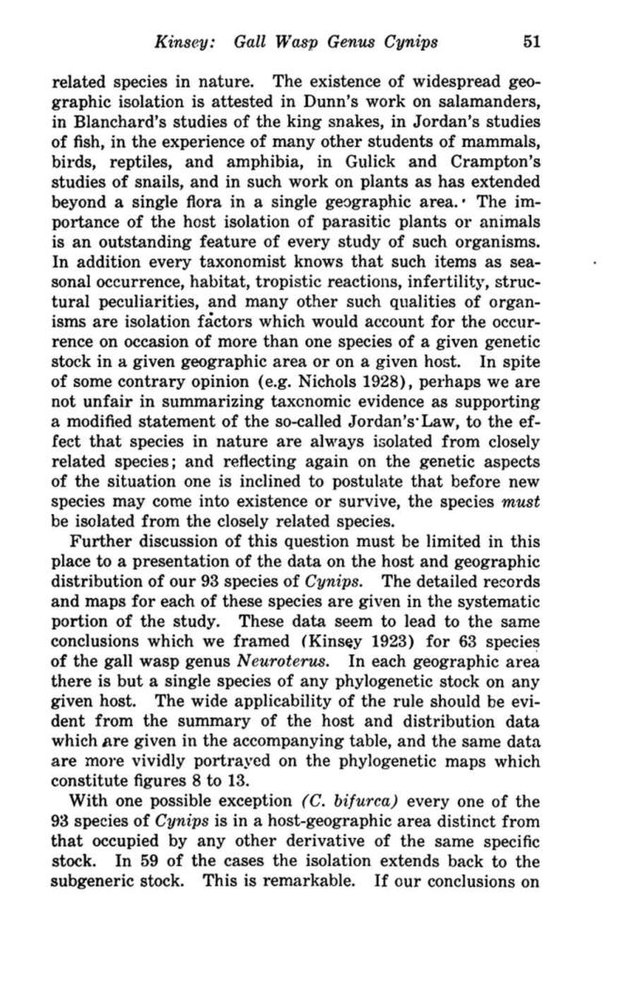related species in nature. The existence of widespread geographic isolation is attested in Dunn's work on salamanders, in Blanchard's studies of the king snakes, in Jordan's studies of fish, in the experience of many other students of mammals, birds, reptiles, and amphibia, in Gulick and Crampton's studies of snails, and in such work on plants as has extended beyond a single flora in a single geographic area. The importance of the host isolation of parasitic plants or animals is an outstanding feature of every study of such organisms. In addition every taxonomist knows that such items as seasonal occurrence, habitat, tropistic reactions, infertility, structural peculiarities, and many other such qualities of organisms are isolation factors which would account for the occurrence on occasion of more than one species of a given genetic stock in a given geographic area or on a given host. In spite of some contrary opinion (e.g. Nichols 1928), perhaps we are not unfair in summarizing taxonomic evidence as supporting a modified statement of the so-called Jordan's Law, to the effect that species in nature are always isolated from closely related species; and reflecting again on the genetic aspects of the situation one is inclined to postulate that before new species may come into existence or survive, the species must be isolated from the closely related species.
Further discussion of this question must be limited in this place to a presentation of the data on the host and geographic distribution of our 93 species of Cynips. The detailed records and maps for each of these species are given in the systematic portion of the study. These data seem to lead to the same conclusions which we framed (Kinsey 1923) for 63 species of the gall wasp genus Neuroterus. In each geographic area there is but a single species of any phylogenetic stock on any given host. The wide applicability of the rule should be evident from the summary of the host and distribution data which /ire given in the accompanying table, and the same data are more vividly portrayed on the phylogenetic maps which constitute figures 8 to 13.
With one possible exception (C. bifurca) every one of the 93 species of Cynips is in a host-geographic area distinct from that occupied by any other derivative of the same specific stock. In 59 of the cases the isolation extends back to the subgeneric stock. This is remarkable. If our conclusions on
